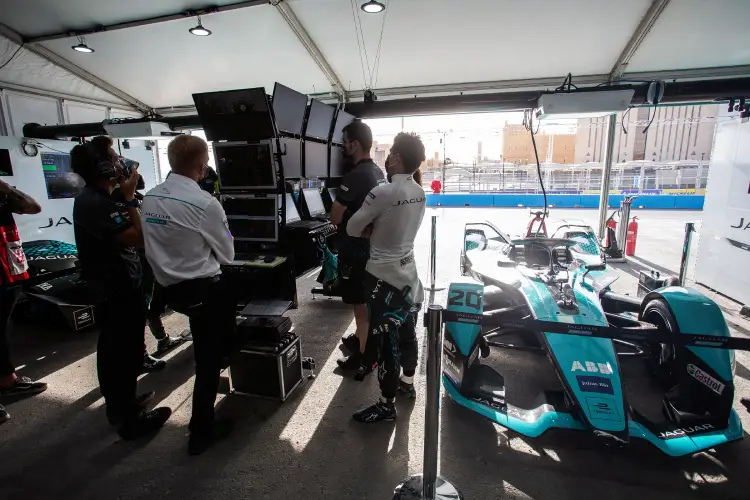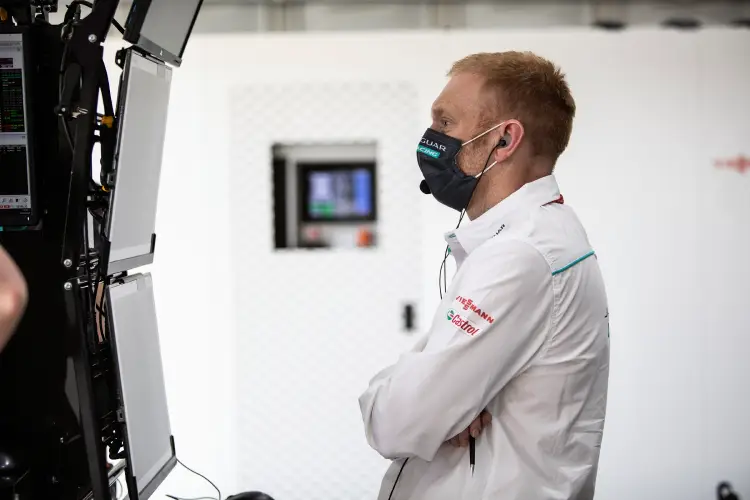
Former Team GB cycling boss Dave Brailsford’s “marginal gains” theory about improving performance bit-by-bit has become something of a sporting cliché, but in motor racing there is no doubt that a tenth of a second gained or lost can be the dividing line between success and failure. Jaguar Racing technical manager Phil Charles hopes a new advanced analytics platform can help make the difference for his team as it targets success in the new Formula E season.

Charles spoke to Tech Monitor just after the second race of the 2021 season, which saw Jaguar driver Sam Bird take the chequered flag, crossing the finishing line two seconds ahead of his nearest rival Robin Frijns. In Formula E drivers race in single-seater electric vehicles (EVs); it is a relatively new class of racing, inaugurated in 2014 and using cutting-edge EV technology, meaning victories are often the result of what Charles describes as “constant optimisation” of the cars.
“My life is about control systems and power electronics, and making the car’s powertrain as efficient as possible,” he explains. “We’re lucky to be working with what is a relatively new technology and it’s improving hugely every year. We’ve made big efficiency improvements since I started three years ago, and that’s really come through optimising all the tiny little bits of tech. That’s how you can get a competitive edge.”
Jaguar Racing’s digital transformation: simulation, simulation, simulation
To aid this, Jaguar has been working with Micro Focus and its product division, Vertica, to implement a suite of high-performance advanced analytics tools powered by machine learning. Charles says this is ultimately to help his team make more informed decisions, and that the Covid-19 pandemic has accelerated the team’s move into the world of virtual testing. “Our digital transformation has really involved going heavily into simulation, and that’s all doubled up now since the pandemic,” he says. “Whereas previously we might have run a split programme, of some simulations and some physical rig testing, now it’s much more virtual testing and that generates a huge amount of data.”
The team uses virtual simulations to optimise the performance of its engine, for example. “You might have ten parameters you can change, but only a set amount of money to spend, so you need to know which change will give you the best race result,” he says. “We can run 2,000 simulations with each parameter change, and Micro Focus allows us to do geospatial visualisation with that data and put together a performance map, as well as looking at how you can link parameter changes and the impact they have on each other.”

While this car development work is what Charles describes as a “slow burn”, the team also uses the Micro Focus system in the high-pressure environment of the races themselves, to help them monitor the likes of tyres and steering as the contest progresses. “The practice, qualifying and race all happen on one day, you blink and it’s gone,” Charles says.
Previously, the team relied on a proprietary analytics tool where it had to code in race information manually, but Charles says “now we can chuck a load of data into the system really quickly, and we have a powerful group of tools that can run some clever algorithms, blast out processing and deliver visualisation we otherwise wouldn’t have time to do. In a race situation you don’t always get everything right, but the more informed you are and the more live processing you can do, the better decisions you make.”
Jaguar Racing technical manager on cloud strategy
Jaguar still uses some of its own software in conjunction with the Micro Focus tools, and Charles is cagey on the team’s cloud strategy for fear of giving away information to rivals. “We have a mixture of types of software, and some of the stuff we’ve designed ourselves is cloud-based,” he says. “Some of our analysis is run in the cloud. What Micro Focus allows us to do is connect up different systems, there’s an adaptor for everything.” Processing is also done at the edge, with track-side servers feeding into the cloud and back to the team’s factory at Grove in Oxfordshire, where it can be interpreted and used to inform production of the car.
Charles, who worked in Formula One before joining Jaguar Racing three years ago, believes the other Formula E teams are using similar digital tools to help their drivers get ahead in the championship. “It’s not something you really talk about, but there are so many little clues out there that we’re all doing the same thing,” he says. “You’ll stumble across reports or little bits of analysis and it’s obvious we’re all looking to optimise in similar ways.” He says his team selected Micro Focus because of the company’s expertise in “exactly the kind of analytics and visualisation technology we were looking for”, and adds: “We’ve been able to connect into their toolkit and get it up and running straight away. It’s perfect for us.”
The cyberthreats facing motorsport teams
The next stage of the partnership is to look at Jaguar Racing’s cybersecurity set-up, with Micro Focus carrying out a cyber resilience assessment, as well as supporting the team on its internal software development. When it comes to cyberattacks, Charles says the team’s “IP is king”, and that protecting it is the top priority. “We’ve worked really hard and spent Jaguar’s money to make the best inverter and motor we can, the last thing we want to do is give details of that away,” he says.
The championship’s growing profile also means team members are increasingly being targeted by phishing attacks. “We’re encouraged to be on social media to promote and sell what we’re doing,” Charles says. “That makes us exposed to spear phishing because we’re visible and people can easily find out information about us. So we’re running workshops with Micro Focus to look at where we’re vulnerable and make sure we cover off any potential problems.”



